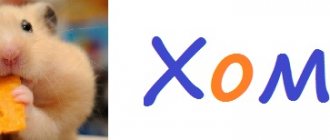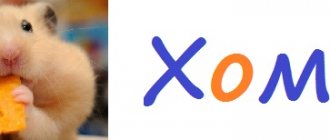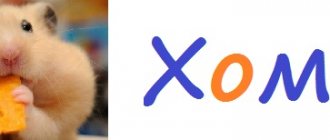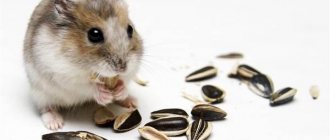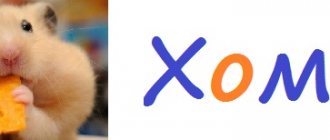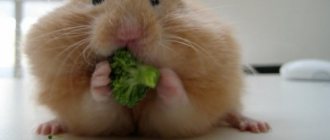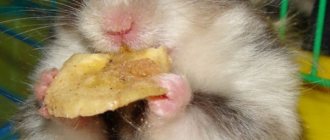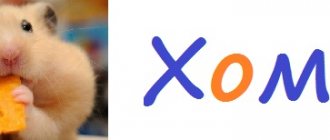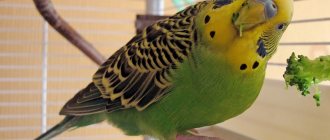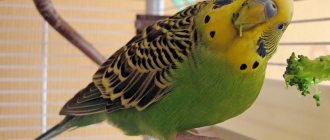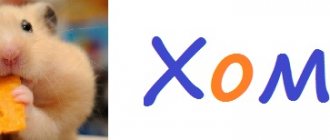With the arrival of summer, more seasonal products appear on our table: different varieties of berries, fresh home-grown vegetables, juicy greens straight from the garden. All of them contain a huge amount of useful substances and microelements. When we consume summer gifts for food, we often think about treating our pets to them. Hamsters, like other rodents, benefit from greens. Therefore, let’s consider whether hamsters can have parsley and dill, and how to serve them correctly.
Composition of parsley
Parsley is a very unpretentious plant, so it can grow in almost any soil. In most countries it is a popular addition to the main dish.
Contains many useful elements:
- B vitamins;
- ascorbic acid;
- folic acid;
- niacin;
- phosphorus;
- sodium;
- calcium and many others.
All these positive qualities have a positive effect on the connective tissues of the body, relieving symptoms of intoxication, and maintaining water-salt balance in the body.
There are two types of parsley: curly and ordinary, but both are equally useful.
Will any variety work?
You can experiment and grow different varieties of dill for your hamster. But if this is not possible, but you have a dacha or your own garden, then ordinary dill, which grows in almost every garden, is quite suitable for additional complementary feeding.
If the pet owner does not have a summer cottage, then such greens can be grown without problems at home, for example, on a windowsill, or periodically bought in supermarkets.
Parsley in a hamster's diet
To ensure that all the necessary vitamins are regularly present in the animal’s body, it is necessary to give it greens. Parsley is one of the first candidates to be added to the main diet. It will not only replenish vitamins in the animal’s body, but will also have a positive effect on its digestive organs. In addition, there are special elite foods that consist of a special number of nutrients specifically for hamsters. And their contents definitely include parsley and dill.
Little ones are practically not allergic to such a product, so you can give them parsley without fear. You need to collect good greens; those growing near roadways are not suitable. Before use, you need to wash it well, without separating it from the stem, since all the components of parsley are equally useful.
How and how much to give
Food for a small rodent is selected taking into account its breed, age and health status. For full development and good health, a hamster requires a balanced diet. His diet should consist of:
- grain mixture;
- greenery;
- products of animal origin;
- vegetables and fruits.
Plant foods are a source of additional vitamins. This includes both grass and tree branches. The latter are necessary for a pet to grind down its incisors.
Plants in the diet of rodents should be combined with grain mixtures and animal products. It is important to understand that greens are not the main food, but an addition to the diet.
There are a few things you need to know before offering food to your hamster.
- A lot of bacteria and dust accumulate on the leaves of fresh greens. Therefore, the grass must be thoroughly washed under running water.
- It is better to choose young grass. The old one will be tough, which will cause damage to the rodent's cheek pouches.
- If the plant is lethargic, it should not be offered to the animal. Such greens will be less tasty and juicy. And if she lies in a cage for some time, she will begin to rot.
- Rodents should be offered several types of plants at once so that they receive the maximum amount of vitamins.
Greens can be given when the rodent is 1 month old. By this time, the animal is able to chew vegetables, fruits, and dry food on its own. The stomach of a month-old pet is already stronger.
Composition of dill
Dill is a short-lived plant, but it is a valuable product for health benefits and goes well with main dishes on the human table. All its parts have healing properties: leaves, stems and fruits (seeds). It is unpretentious to the soil, so it grows on almost all continents.
Dill is rich in the following elements:
- B vitamins;
- other vitamins: C, E, P;
- essential oil;
- organic acids;
- magnesium;
- phosphorus;
- iron and many others.
Dill improves immunity, has a beneficial effect on the cardiovascular system, and improves the functioning of the gastrointestinal tract.
The benefits of grass for a hamster
These rodents are very fond of fresh greens, so they must be present in the diet of Djungarian, Syrian and other breeds of hamsters. You should give as many permitted types of herbs as possible because they contain a different set of vitamins. Greens are a good source of energy for animals due to their carbohydrate and protein content.
Important! Domestic rodents are prohibited from feeding grass collected on the street, near highways or near industrial areas. Such greenery is contaminated with dust, soot, heavy metals and other harmful substances.
The beneficial properties of the herb include:
- the presence of vitamins, namely groups A, B, C and E, helps improve the animals’ resistance to various diseases;
- a large amount of useful microelements such as calcium, magnesium, iron, phosphorus, zinc, potassium;
- fiber supports the animal’s digestive system and helps process food;
- some types of herbs can serve as medicines for the prevention and treatment of diseases, for example, plantain has a disinfecting effect, and knotweed has a diuretic and anti-inflammatory effect;
- individuals of small species build houses or nests for babies from grass.
Your hamster should always have enough fresh greens in his cage. However, it is important to pay attention to its varieties and give only healthy and high-quality food, so as not to harm the health of the animal.
Other greens
If we consider other options for juicy, healthy greens for the Djungarians or Syrians, then the following options are suitable:
- Lettuce leaves are a favorite delicacy for hamsters; before eating, you need to wash the leaves well and renew the stem by cutting just above the end of the stem.
- Spinach will be useful for rodents with constipation; it has a beneficial effect on the digestive system.
But these plants should never be given to a hamster:
- Green onions contain a lot of sugar, which leads to obesity.
- Sorrel – Oxalic acid causes heartburn and bloating. Due to unpleasant sensations in the tummy, the animal may behave aggressively.
- Mint - the menthol contained in its composition irritates the walls of the stomach. May cause ulcers.
- Basil – contains an increased amount of essential oils, which will not benefit the home.
- Mushrooms - in any form are contraindicated for furry rodents; eating them can be fatal.
What herbs should not be given to a hamster?
Among plant foods there are herbs that should not be given to rodents. They pose a danger to the animal and can cause harm to health.
- Sorrel is a plant that is too acidic. Irritates the gastric mucosa.
- Mint, lemon balm - aromatic herbs act as an allergen.
- Garlic and onions (feathers) - will not be liked due to their specific aroma and taste.
- The tops of tomatoes, potatoes, peppers and eggplants contain a toxic substance - solanine.
- Coniferous trees contain resin, which negatively affects internal organs. Causes a severe allergic reaction.
- Beet tops can be given to your hamster in limited quantities. Abuse of the product causes diarrhea.
- St. John's wort. While this is a medicinal plant for humans, it is dangerous for hamsters.
- Tarragon is given with caution. The herb is too aromatic and may cause an allergic reaction.
Animals look at indoor plants with curiosity. The leaves of your favorite flowerpot often end up in the hamster's teeth. If a houseplant is poisonous, it may harm the animal. Therefore, owners should keep flowers away from their pets.
Houseplants that pose a danger to your hamster:
- aloe;
- begonia;
- Kalanchoe;
- oleander;
- ivy;
- azalea;
- alpine violet;
- gloriosis;
- cycad;
- succulents.
Plants must be present in the rodent's diet. Every owner should know what plants can be given to a hamster so as not to harm him. The lifespan of rodents depends on their diet. Animals that eat greens on a regular basis are more active and less likely to get sick.
What kind of grass can you give to your pet?
For consumption, the animal can be given any herb that is suitable for humans in its raw form. But it is worth remembering that the animal is unlikely to like onions, but the hamster will not refuse salad. Greens from the street can only be given if they are collected away from highways and busy traffic.
Clover, burdock (young shoots), and wormwood grass in moderate doses are suitable for rodent food. It is also worth remembering a number of the following points:
- Wheatgrass is considered a common plant. It can also be seen in hay intended for rodents. A moderate amount of wheatgrass will benefit the rodent.
- Knotweed is often used in folk medicine. This medicinal herb is also safe for rodents.
- As for dandelion, your hamster can only eat the leafy part of the plant. But you need to feed it to the animal carefully. If there is too much dandelion, it can harm the rodent's gastrointestinal tract. It is necessary to introduce dandelion into your hamster's diet only after consulting a veterinarian.
- Plantain, in addition to knotweed, is also recommended for hamsters in unlimited quantities.
- Another herb that has high nutritional value is nettle. This plant is useful for rodents as a means of preventing vitamin deficiency. In early spring, the animal is allowed to give nettle leaves. But before that, they should be boiled to remove the acid. Then squeeze, cut and give to your pet.
What not to feed a hamster
Like any other animal, hamsters should not be given table food. Anything fried, fatty, salted or smoked is also contraindicated, as this has a detrimental effect on the digestive system.
You should also not give candied fruits and nuts. Vegetables and fruits for feeding the hamster are best used from the garden. Fruits and vegetables in stores are often treated with chemicals. They pick them in their unripe state to get them to the retail store before they spoil.
What fruits should a hamster not eat?
Hamsters should not be given fruits that contain large amounts of sugar, citrus fruits are not allowed, they are too sour, and exotic fruits are prohibited. Also, you should not feed your fluffy pickled and canned vegetables.
Watermelon, melon, grapes, citrus fruits, avocado, persimmon, pineapple, mango, banana, apricot, kiwi, pomegranate.
What vegetables should a hamster not eat?
Below is a list of vegetables that should not be given to a hamster in any form. Also, you should not feed your fluffy any other vegetables that have been pickled and canned. Cabbage and peas cause gas formation and bloating appears. Potatoes contain solanine and a large amount of starch. Garlic and onion are too hot.
Cabbage, peas, potatoes, tomatoes, garlic, onions, radishes, daikon.
What greens should a hamster not eat?
Parsley has a diuretic and laxative effect, causing diarrhea and then dehydration. Sorrel and rhubarb are too sour, and wild garlic is pungent.
Parsley, sorrel, rhubarb, wild garlic, mint.
The benefits and harms of dill for a hamster
Veterinarians say that dill is very useful for females bearing offspring as vitamins. However, you can give no more than 50 g and once a week. It is also worth including in the diet of a female who has just given birth to improve lactation.
Excessive amounts may cause diarrhea or diarrhea.
Dill seeds are not only a laxative, but also a diuretic.
They increase the secretion of bile and gastric juice, lower blood pressure, and an overdose is especially dangerous - the animal may lose consciousness. Therefore, it is strictly forbidden to give them to hamsters!
Features of feeding a pregnant or lactating woman
While bearing and feeding offspring, the female Syrian hamster needs to eat heavily. During this crucial period, she requires a slightly larger amount of nutrients. A complex of vitamin and mineral supplements should also be introduced. The diet includes more fresh greens, sprouted grains and high-protein foods. Food should be as varied as possible and definitely healthy.
Veterinarians advise putting a mineral pebble (sold at any veterinary pharmacy), a piece of chalk, coal or calcium gluconate inside the cage as a treat. A pregnant or lactating female hamster usually has an increased appetite and she usually becomes very anxious when food is scarce. To avoid negative consequences for her and her offspring, it is recommended to increase the amount of feed given. It is better if there is always food in the bowl, but it must be fresh.
What to feed small hamsters
For the first four weeks of their lives, small hamsters feed exclusively on their mother's milk. There is no need to feed them additionally. Newborn hamsters left without a mother (or in the absence of milk from her) are fed with soy-based infant formula for the smallest (from birth 0+). You can also feed it with a cat milk replacer.
Once they reach the age of one month, they begin to be offered other food. The digestive system of babies is still very delicate, so the diet of adult hamsters is not suitable for them.
Regular grain food is poured into a bowl so that the kids can rummage through it and choose what they like. It is better not to give nuts, fruits and other treats for now, but to put them aside for later (until he grows up). Hamsters should be fed milk formula and porridge; you can mix steamed oatmeal or buckwheat flakes with baby puree (from various vegetables or meat). Gradually, one by one, other products are introduced: sprouted grains and young shoots, fresh herbs.
Hamster nutrition: do's and don'ts
It would seem that the answer to the question “What to feed a hamster?” very simple. However, in practice, feeding hamsters can raise many questions among inexperienced owners regarding whether this or that product can be given to their pet.
Hamsters must have a balanced diet
. This means that it will include not only ready-made dry food, which forms the basis of the diet, but also other products. In particular, you can give your hamster the following foods.
Cereals, nuts and seeds
. From cereals you can give wheat, oats, barley, buckwheat, rolled oats, lentils. They are given in dry form; Porridges cooked in water without salt or seasonings are fed to sick and weak animals. Nuts you can give are peanuts, hazelnuts, cashews, and walnuts. You can also give your hamster melon, pumpkin, sunflower and sesame seeds.
Vegetables, fruits and berries
. Hamsters' diet must include fresh fruits, berries and vegetables - a source of vitamins and moisture. Among the berries you can give currants, gooseberries, strawberries, pitted cherries, and blueberries. From fruits - apple, pear, apricot, melon, peach, banana, grapes, plum (in small quantities). Hamsters also enjoy eating dried fruits - dried apples and pears, raisins, dried apricots, banana chips.
Most vegetables are given to your hamster raw.
. You can treat your pet to pumpkin, carrots, bell peppers, tomatoes, cucumbers, radishes, radishes, zucchini, zucchini, beets, squash, turnips, green beans, fresh corn, Chinese cabbage, broccoli, fresh peas, young peas in pods. Occasionally and in small quantities, you can give cauliflower, peeled rose hips and celery. Some vegetables (pumpkin, carrots, beets and peas) can also be given boiled; they are cooked for a short time and without salt.
Greens, leaves and sprouts
. Hamsters' food may also include oat, wheat, bamboo and alfalfa sprouts. From greens you can give salad, dill, parsley, plantain leaves, dandelion leaves, nettles, clover. Hamsters also eat leaves of fruit trees (apple, cherry, pear), as well as other deciduous tree varieties (ash, beech, maple, willow, poplar, oak, birch, walnut).
All vegetables, fruits and berries that you give your hamster must be fresh, not overripe or spoiled
. Plants for a hamster should be collected away from roads and industrial enterprises. Any plant food should be washed thoroughly before giving it to your hamster.
Hamsters' diet also includes a protein component.
. This can be boiled chicken or low-fat boiled fish without seasoning and salt, low-fat fermented milk products (yogurt without additives and sugar, cottage cheese, kefir, all with a fat content of no more than 1%), boiled chicken or quail egg. Less often they give live food: butterflies, grasshoppers, mealworms, earthworms, dried gammarus. Any live food must be purchased at a pet store! Protein products are given to the hamster 2-3 times a week (of course, not all at once, but just one).
There are a number of foods that are not recommended to be included in a hamster's diet.
. They cannot be called strictly prohibited, but there is a high risk that they will cause irreparable damage to the health of your pet. These include cheese (especially fatty and salty varieties), acorns, Brazil nuts, persimmons, white bread, potatoes, as well as ready-made food for other rodents and birds.
Finally, there are foods that should absolutely not be given to hamsters.
. These include:
Proper nutrition for hamsters is one of the guarantees of their health. At the same time, it is very important to know which foods you can give your hamster and which you absolutely cannot.
Source
What's the result?
Yes, friends, to paraphrase a famous advertising slogan - not every weed is equally beneficial. While I was collecting material for the article, I was also surprised by some facts. It used to be like this: he went out into the yard, picked some grass and put it in a cage. What my dzhungarik liked, he ate, what he didn’t like, he didn’t eat. Accordingly, in the evening I threw it away so that it would not dry out and rot. Naturally, I didn’t give him any nettles, because I wouldn’t voluntarily climb into these thickets with my bare hands. It turns out in vain... Lack of iodine in the body causes problems with the thyroid gland, not only in hamsters, but also in people. Yes, I know about nettle cabbage soup, but sorry, it’s not my thing. Do whatever you want with me. And now I’m thinking... Maybe it’s for nothing that I don’t eat them?
Nothing beautiful is alien to us.
In the wild, how do hamsters distinguish beneficial grass from harmful grass? Trial and error? After all, the hamster itself is the size of a child’s fist. Does he need much? It seems that they are mistaken only once... Or, option No. 2 - during evolution, only those who can calmly digest 90% of everything that is in their habitat have survived.
What do you think of it? Tell me?
Can a hamster eat lettuce?
Fresh lettuce is a favorite treat for hamsters, so you can safely include these greens in your pet’s diet. Before pampering your rodent with a delicate lettuce leaf, it should be thoroughly rinsed under running water and dried with a napkin or paper towel.
You can give hamsters salad two to three times a week.
Where can I get grass for a rodent?
Greens for rodents can only be collected in summer cottages, as well as in park areas or forest areas. In addition, it is necessary to ensure that the grass is treated with chemicals such as pesticides. To neutralize possible additives, it is recommended to leave the greens in water for some time. The liquid will absorb substances harmful to the rodent, leaving only beneficial vitamins. In the summer, grass grows everywhere.
But before collecting, you need to consider a number of nuances:
- A small life hack: you can soak the greens in water for a couple of hours, and then give them to your hamster as needed. This method will help provide nutrients to your pet’s diet throughout the year.
- Herbs collected and prepared with your own hands can be chopped and dried. Drying should not be in the open sun, but in the shade. In addition, such grass can be mixed with animal feed.
- Some owners specifically grow grass on their windowsills. You can grow it either from seeds or using special grass left uneaten by the animal.
Juicy food contains a lot of water, which is beneficial for your pet. Young grass is considered especially useful. But, as mentioned above, not every grass is suitable for adequate nutrition of a rodent. In order not to make a mistake with your choice, you need to carefully study the prohibited and permitted varieties of herbs and, depending on this, formulate your diet.
Rules for feeding Syrian hamsters
The owner of a hamster must know what to feed his pet and how to do it correctly. To do this you need to have an idea about their lifestyle.
Diet
Hamsters are animals whose greatest activity occurs in the evening. Be sure to take this into account when creating a menu for your pet. It is better to divide the entire daily diet into two parts: it is recommended to give the smaller part in the morning, and the larger part in the evening.
As for drinking, the hamster should always have clean water at room temperature freely available. For this, it is better to purchase a special drinking bowl. It is not recommended to place a bowl of water in the cage - an active animal will quickly knock it over. In addition, debris will constantly fall into it.
Important! Constantly living in a cage and eating well, a hamster can rapidly gain weight, which will negatively affect its health and well-being. To avoid this, provide your home with physical activity, for example, purchase a special running wheel.
Vitamins for golden hamster
Pet stores sell special vitamin complexes for rodents. As a rule, they are available in liquid and solid form. Vitamins in liquid form can be added to the drinking bowl, and in solid form - in food. The first option is more convenient, but also more expensive.
You can put a mineral stone in the rodent's cage. It helps the hamster grind down its incisors, improves digestion and supplies the body with essential minerals. Hamsters usually gnaw on such stones with pleasure.
There are also chalk stones on sale that supply the body with calcium and other trace elements. They can be either regular or with various additives - herbal or fruit. Such stones are especially useful for pregnant females. Under no circumstances should you give your hamster regular school chalk - it is not food grade and can therefore be dangerous for the small rodent.
Note! If you give your pet premium food that already contains vitamins and minerals, then there is no need for additional vitamin complexes. An overdose of vitamins can also harm your pet, as can their lack.
How to avoid digestive problems?
The hamster's diet should be balanced. If you buy ready-made food and mixtures, be sure to check the expiration date.
Hamsters love to hoard food, and rotten food can cause digestive problems. Therefore, from time to time it is recommended to check the hidden places of the cage and throw away any spoiled food.
Typically, adult and healthy hamsters do not suffer from indigestion. If your pet still has problems, try giving him boiled broken rice for diarrhea or a little vegetable oil for constipation. And be sure to review your hamster’s menu so that digestion returns to normal.
It’s good if the food has a protein component
What else should you not give your hamster?
Products from this list are also prohibited:
Hamsters are very thrifty animals. Anything they can’t eat, they will definitely take to their pantry. If there are stocks of cereal crops, then there is no need to be afraid. But grain food alone will not be enough for a hamster to get a complete, balanced diet. Therefore, your hamster needs to add fruits, vegetables, herbs, protein foods, and dairy products to his diet. It is precisely such stocks that quickly deteriorate and rot, spreading an unpleasant odor. Therefore, when feeding your hamster, you should carefully monitor the daily intake.
Eating spoiled moldy foods can cause poisoning. Check your hamster's pantry daily. It is important not to injure him. Hamsters are small and shy, they are very susceptible to stress. Therefore, you should not suddenly open the door and take all the food away at once. You need to get the hamster out of the cage, then empty the supplies. But in return, leave some delicacy in the pantry that won’t spoil.
It is also worth remembering that these furry, thrifty little lumps are prone to diabetes. That is why all sweets are prohibited from food, including fruits with a high sugar content.
Nuts are too fatty, so you need to feed your hamster in small quantities. Brazil nuts are on the prohibited list because they are too heavy for a hamster's digestive system. Almonds are bitter and cause poisoning.
If you feed your hamster fruits and berries, you must first remove large seeds from them. The seeds are dangerous because they contain hydrocyanic acid, which is dangerous for all animals.
Source
What products are allowed and not allowed?
Proper nutrition for a Syrian hamster, like any other, should be well thought out, balanced, as complete as possible and as varied as possible. He eats almost everything, but there are quite a large number of foods that are completely contraindicated for him.
Cereals
In the daily diet of the Syrian hamster, cereals constitute the base (at least 30%), which cannot be replaced by anything. You can give:
- Buckwheat – preferably dry or soaked in warm water for 10-12 hours, but you can also boil it (in water);
- Wheat – best sprouted or cold soaked. Dry grain is poorly absorbed by the Syrian hamster;
- Oats – flakes (rolled oats) and grains (unpeeled if possible) are allowed. Sprouted oats are very useful for hamsters;
- Lentils - can be in any form (boiled and natural dry);
- Barley, slightly steamed;
- Barley, without hull.
It is not recommended to feed your Syrian hamster the following cereals:
- Rice is a heavy food that does not contain anything useful.
- Semolina – promotes weight gain, and contains practically no useful substances and microelements; it is an empty refined cereal.
- Millet - if you give it, then only unpeeled (millet) and a little.
Muesli should not be given to Syrian hamsters. In addition to cereals and pieces of fruit, they contain a lot of sugar, which is harmful to the health of rodents.
Vegetables
Both fresh and boiled vegetables have an important place in the daily diet of the Syrian hamster, but in fairly small quantities (40-50 g). Will be useful:
- pumpkin, zucchini, eggplant;
- radishes, turnips, carrots, beets;
- cucumber, sweet pepper (paprika);
- tomatoes (rarely, a couple of times a week);
- green beans.
All vegetables must be thoroughly washed and skinned (preferably). You cannot give rotten and stale fruits to Syrian hamsters, because then poisoning is guaranteed.
Preference is given to crops grown on your own plot, because store-bought products are grown using chemicals that are harmful to hamsters, and sometimes even deadly.
Prohibited, may cause harm to health with fatal outcome:
Fruits and berries
It is undoubtedly useful and even necessary to feed the Syrian hamster with fresh fruits and sometimes berries. After all, they are extremely rich in nutrients, various minerals and vitamins required for the normal functioning of the body. Useful and recommended:
- apples (12-15 g daily) fresh and dried;
- bananas (1-2 times a week, 8-10 g) fresh and dried;
- fresh pears (10-12 twice a week), dried (every 10-14 days, 5-6 g);
- peach, apricot, nectarine (1-2 times a month, 5-6 g);
Berries are relevant in a hamster’s diet, but they are added rarely and little by little (half or a whole berry once a week):
- blackberries, raspberries;
- strawberries, wild strawberries;
- blueberries;
- rowan;
- red and white currants;
- gooseberries, lingonberries, blueberries, grapes and cherries, sweet cherries (necessarily seedless).
- any citrus fruits (pamelo, orange, tangerine, etc.);
- exotic fruits from the tropics (coconut, kiwi, pineapple, etc.);
- melon watermelon;
- sea buckthorn, barberry;
- pomegranate seeds.
